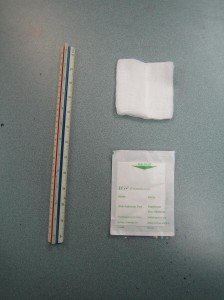A first aid kit must be easily accessible and portable. A kit does not have to be overly large but big enough to hold all the basics necessities. It is important to consider the type of first aid kit that you want and where you will keep it.
You can use a portable storage box as a first aid kit so that it can hold all the essentials required for both minor and major emergencies.
Where to store your first aid kit
First aid kits should be stored in a place that you can easily access in case of an emergency. Storing your first aid kit in a central location will ensure that it is readily accessible whether for small or large emergencies. It is best to have two first aid kits – one for home and another one for your vehicle. Having more than one first aid kit means that you can use one any time when needed. There are places in the house where you can store your first aid kit.
- Bathroom cabinet
- Kitchen cabinet
- Workshop
- Garage
- Vehicle
Essential items for a car first aid kit
When preparing your first aid kit for your car, there is an important item that you should include – a mobile phone. This is definitely a must-have tool in case of an emergency. If you could not readily access emergency assistance, your car first aid kit is not complete. The mobile phone must have enough battery to make calls. If you have a cell phone that you do not use anymore, you can put it in your first aid kit.
Medical information
Even though this is not part of your first aid kit, individuals who have certain medical conditions should have his/her medical information readily accessible at all times. In doing, the medical team will have an idea what to do during emergencies.
Content of a first aid kit
For you first aid kit, all the essential should be included such as:

- Over-the-counter pain medications such as ibuprofen or acetaminophen
- Alcohol wipes
- Tweezers
- Antiseptic hand cleanser
- Sterile gauze
- Medical adhesive tape
- Elastic bandages
- Adhesive bandages in different sizes
- Antibiotic ointment
- Insect bite swabs
- Hydrogen peroxide
- Triangular bandages
- Bandage scissors
- Gloves
- Instant cold packs
- Barrier device for CPR
Depending on the specific needs of some family members, you can add the required medications and items so that they are readily on hand, especially during calamities. For natural calamities, it is best that your kit should also have a flashlight and extra batteries.
These are the essentials that must be included in your first aid kit at home, in your car or in the office. Always remember that you never know when emergencies might happen, thus with a first aid kit that is packed with all the essentials and readily accessible, it can greatly help out those who are in need.
